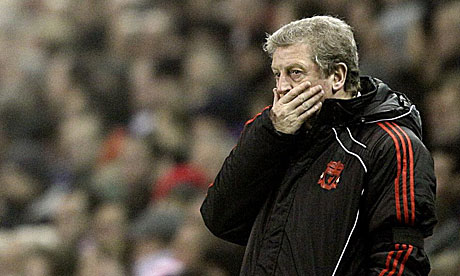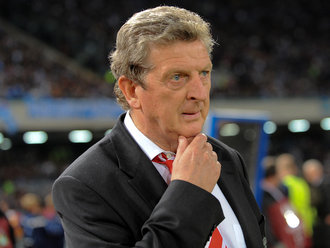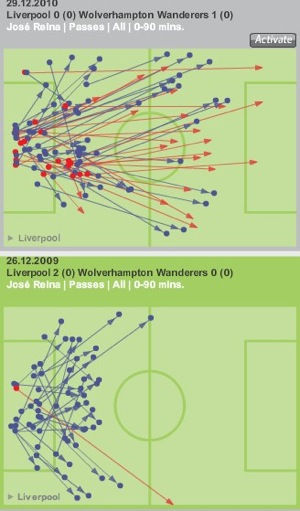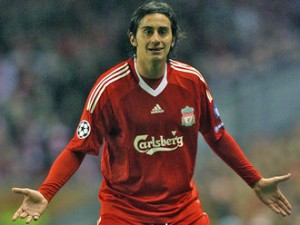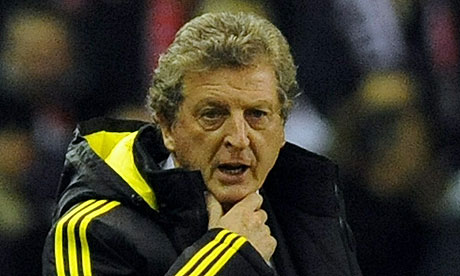
When Paul Konchesky joined Liverpool this summer a rival Premier League manager invoked the ghost of Julian Dicks, another bald English left-back from central casting. "He's not a Liverpool player," the manager remarked of Konchesky, who was jeered from the pitch in last night's 1-0 defeat at home to Wolves, days after his mother had allegedly called the club's fans "Scouse scum" in a hastily erased Facebook post.
"A Liverpool player" is an instantly evocative title that evokes Dalglish, Keegan, Souness, Lawrenson and Rush. The question of who is – and who demonstrably is not – a candidate for this deification has exercised the minds of Liverpool supporters since Graeme Souness handed the shirts of living saints to several comparative journeymen in his three-year reign from 1991-94.
Konchesky's acquisition from Fulham by Roy Hodgson was a rational attempt to solve a positional shortcoming and is cited here only because Liverpool's deep structural weakness is easy to identify. In the 20 years since they last won the league title, an ocean liner of substandard or under-achieving footballers has disgorged its human cargo at the Mersey docks and sent it up to Anfield, where the team now sit in 12th place in the Premier League, three points above the relegation zone.
On his own journey from the Thames to the Mersey, Hodgson saw straightaway that Liverpool's first- and reserve-team squads were suffocating under the weight of mediocre and unused personnel. A reader of highbrow fiction, the former Fulham manager used a fine phrase to describe the surfeit of drifters he came across while Steven Gerrard, Jamie Carragher and Dirk Kuyt did most of the hard work. Hodgson called them "purposeless".
Critics will say he has added to the ranks of the purposeless by taking delivery of Konchesky, Christian Poulsen and Milan Jovanovic (Joe Cole and Raul Meireles are of a higher calibre and still have time to assert their talents). But equally Hodgson could point to his excellent rebuilding work at Fulham and his shrewd eye for a hidden jewel. He could also say Liverpool are deluded by old glories (Carol Konchesky said that, too) if they think the budget exists to spend like Manchester City after so many expensive blow-outs in the transfer market.
Simply: Liverpool have recruited dozens of duds over the last 10 seasons while Manchester United, Arsenal and Chelsea have signed very few. The Kop, the team's best players and Hodgson himself are toiling against this debilitating imbalance, which has become manageable only in bursts: first when Rafael Benítez's team won the 2005 Champions League and then when Gerrard, Carragher, Pepe Reina, Xabi Alonso, Fernando Torres and Javier Mascherano gelled to propel the 2008-09 side to second place in the Premier League with 86 points.
Any professional footballer will tell you a trophy-winning team needs a decisive ratio of gifted players and committed winners. Benítez's best side possessed that magical half-dozen. But when Alonso and Mascherano left, Torres lost interest and Gerrard and Carragher were hampered increasingly by injuries, the mediocrity all around them again became Liverpool's defining characteristic.
There is no memory game on red Merseyside quite like the recitation of nearly-men and no-names – starting with the forwards. Sean Dundee, Erik Meijer, Florent Sinama-Pongolle, Fernando Morientes, Titi Camara, Ryan Babel, David Ngog and Andriy Voronin demand inclusion. In other wide or attacking midfield positions room would be found for Anthony Le Tallec, Albert Riera, Mark González, Jermaine Pennant and Bruno Cheyrou. Defenders worth a mention are Philipp Degen, Sotirios Kyrgiakos and Andrea Dossena. This random selection from a lengthy list leaves out many obscure French or Spanish purchases who barely sniffed first-team action. The vast scale of waste is a huge rolling problem for a club once renowned for precision in the scouting department. Each wave of mistakes creates a new challenge of culling and dispersal, restricts budgets and overloads those players capable of vying for titles with the responsibility of carrying passengers.
The homegrown Liverpool contingent have complained privately for years about this annual influx of substandard punts. A scattergun transfer policy has conspired with the failure of the academy system to produce heirs to Gerrard, Carragher, Michael Owen and Robbie Fowler. Under extreme pressure to correct the slide of Benítez's last campaign, Hodgson tries to perform major surgery on a bloated workforce while bad results whip up a wrecking gale.
The emotional disengagement of Torres bites at the hopes of supporters because he is the one world-class foreign import still wearing the Liver bird, unless Reina creeps in. Called to the stand, Gérard Houllier and Benítez would defend themselves with weighty evidence. Houllier won a domestic and European cup treble in 2001 and Benítez took them to two Champions League finals (winning one) from 2005-07. Neither, though, could bounce the team any higher than second in the Premier League.
Both surrendered that momentum straight after building it. Houllier spent £20m on Salif Diao, Cheyrou and El Hadji Diouf in the summer before Liverpool fell back to fifth (2002) and Benítez went from second in 2009 to seventh 12 months later. The reason, in both cases, was a dilution rather than a deepening of the talent pool.
So an exasperated Anfield crowd mock the manager ("Hodgson for England" they sing) while Liverpool arrive in a new year with their worst points total since Don Welsh's team were relegated in 1953-54. The club's new American owners, who have no experience of making football decisions, must calculate whether to back Hodgson's cull or simply transfer a chronic structural problem to another manager.
In the past 10 years major transfer miscalculations by Arsenal, Chelsea and United can be counted on the fingers of two hands. At Liverpool they cram the picture. The Noughties were an age of mass auditions and experimentation, and culpability extends to owners and directors.
Unveiling Ron Yeats, Bill Shankly invited journalists "to walk around" the "colossus" he had signed. Yeats was "a Liverpool player" in the intended sense. Not just good, but special. There are too few now.

